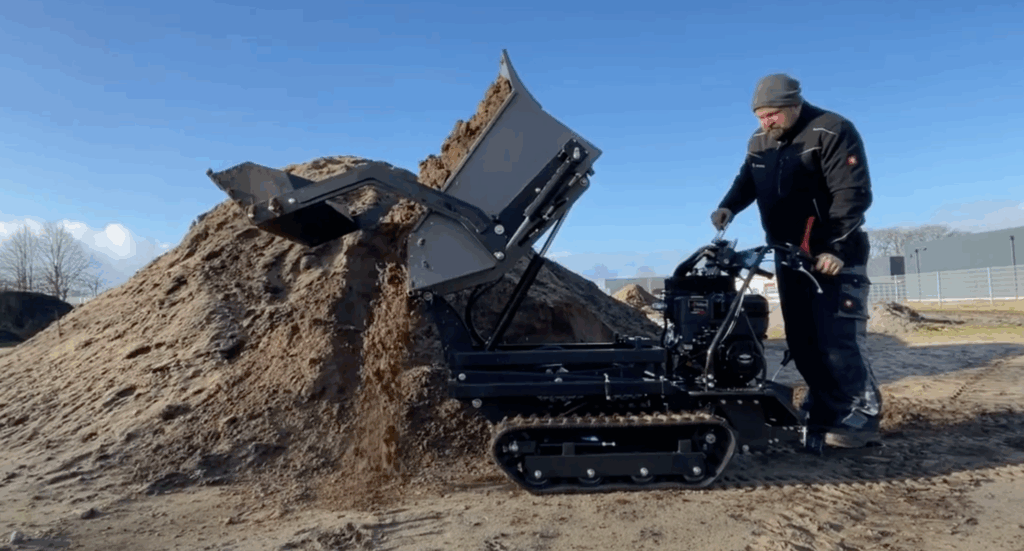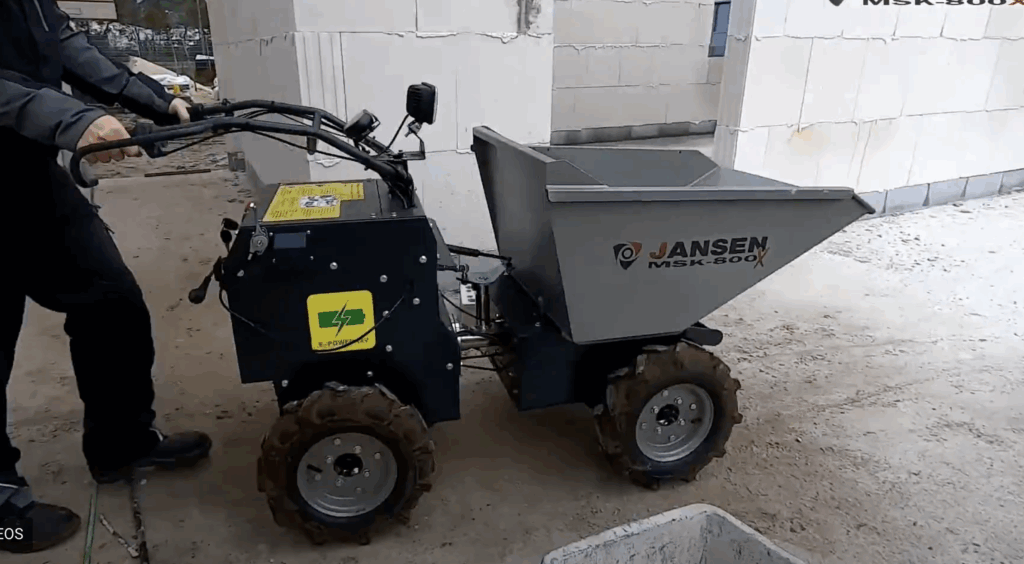Why a Tracked Dumper Is Better Than a Wheeled Dumper

When moving heavy materials, choosing the right type of dumper greatly impacts productivity, safety, and operational costs. Two main options dominate the market today: tracked and wheeled dumpers. Each comes with advantages, but between these two options, tracked dumpers outshine their wheeled counterparts in a wide range of demanding tasks. Learn why tracked dumpers are better than wheeled dumpers and how they deliver more value, reduce headaches, and improve productivity and efficiency.
Introduction to Tracked and Wheeled Dumpers
Dumpers are helpful machinery for transporting soil, gravel, rocks, and other bulk materials over short or medium distances. Wheeled dumpers are a traditional solution, relying on high-traction rubber or pneumatic tires for movement. They operate effectively on paved surfaces or hard-packed ground, and their maneuverability is a plus for tight workspaces.
Tracked dumpers, in contrast, use a continuous rubber or steel track system instead of wheels. Tracks grip and move over surfaces with a much larger contact area. This design gives tracked dumpers an immediate edge in certain environments, especially where ground conditions pose challenges for wheeled vehicles. Typically, both styles are available in various sizes, allowing them to serve everything from small residential landscaping jobs to the largest government infrastructure projects or commercial developments.
The Benefits of Tracked Dumpers Over Wheeled Dumpers
Superior Terrain Adaptability
One of the main reasons tracked dumpers outperform wheeled models is their adaptation to terrain. The tracks distribute the weight of the dumper over a broader area. This spreading of force means the machine doesn’t easily sink into soft or unstable surfaces. On muddy construction sites, loose gravel, wetlands, or snow-packed areas, tracked dumpers keep moving while wheeled dumpers may get bogged down or spin their tires.
This adaptability is especially valuable for farms, landscaping companies, and government public works crews working in rarely perfectly level or dry areas. Tracked dumpers make it much easier to maintain consistent production on jobsites that would otherwise have issues due to the weather or terrain type.
Enhanced Stability and Safety
Stability directly ties into on-the-job safety. Tracked dumpers offer a lower center of gravity thanks to their track design, and the wide base further reduces tipping risks. Even on sloped or uneven surfaces, a tracked dumper remains steady compared to a wheeled dumper, which may rock or tip when carrying a full load.
These stability advantages minimize the risk of accidents, which is crucial for crews maintaining public properties or companies working on high-value landscaping contracts. Residential landowners with hilly or irregular plots also benefit from the added peace of mind that a more secure hauling solution offers.
Lower Ground Pressure and Minimal Environmental Impact
Tracked dumpers are purpose-built to exert less pressure on the ground. Since the machine’s weight spreads over the area of both tracks, the pounds per square inch (PSI) on any one spot is dramatically reduced compared to narrow-profile tires. Tracked dumpers travel across lawns, constructed playing fields, or sensitive wetlands without causing deep ruts or major soil compaction.
For landscaping professionals, tracked dumpers are better than wheeled dumpers due to their minimal ground disturbance. Less surface damage translates to lower remediation costs, fewer client complaints, and a healthier landscape after project completion.
Traction in Extreme Conditions
Tracks excel at providing traction on surfaces where wheels cannot keep up. Mud, snow, or sand quickly immobilizes a wheeled dumper, leading to downtime or even calling in additional equipment for rescue. Tracked dumpers grip using their entire length into these tough environments. Farmers clearing paths after a storm or large landowners working muddy fields see immediate results in productivity and reliability.
Durability and Longevity of Tracks
Tracks withstand aggressive use across rocky, abrasive, or variable ground. The materials and engineering used in modern tracks help them absorb shocks, displace energy, and recover from impacts that could flatten or puncture a pneumatic tire. While wheels may provide a smooth ride on pavement, they are more vulnerable to damage when faced with debris, sharp stones, or construction waste.
Over months and years, tracked dumpers experience fewer incidents of serious mechanical failure from rough usage, leading to a longer service life. This extended period between maintenance means fewer replacements, repairs, and a better return on investment for farms, contractors, or agencies managing their fleets.
Fuel Efficiency on Challenging Terrains
Tracked dumpers have the potential to move more efficiently on challenging ground. Their tracks reduce slippage and create steady forward movement, meaning the machine requires less engine effort to overcome resistance. Fuel consumption remains lower than wheeled dumpers forced to power through soft or uneven ground.
Fuel efficiency cuts daily operational costs and reduces the machine’s total carbon footprint, aligning with sustainability goals. Outdoor equipment dealerships confidently promote tracked dumpers as a greener, more cost-effective solution for their clients.

Versatility in Construction and Industrial Applications
Tracked dumpers prove more versatile across different tasks and industries. While wheeled dumpers are efficient for smooth, paved surfaces, tracked models transition seamlessly between variable terrains. The versatility of this outdoor power equipment shines in projects that span diverse ground types, such as large landscaping contracts or major civil engineering works.
For example, a landscaping company might work on manicured lawns and rough reforestation projects. The ability of a tracked dumper to operate gently on turf and then handle muddy clearance sites without missing a beat delivers efficiency and cost savings. Industrial managers and government agencies planning multiphase or multilocation projects find tracked dumpers an adaptable, do-it-all solution.
Reduced Risk of Getting Stuck
Getting stuck in soft or loose soil disrupts an entire schedule and creates unexpected recovery and repair costs. Their broad, grip-heavy design keeps tracked dumpers moving when wheels stop dead. Jobsites with sand, thick mud, or snow are notorious for immobilizing wheeled vehicles, sometimes causing days-long delays or requiring expensive tows.
Tracked dumpers minimize this risk, making them an excellent choice for anyone whose projects or properties include variable, unpredictable terrains. Owners and fleet managers rest easier, confident in reliable performance year-round.
Cost-Effectiveness Over Time
When evaluating the cost of a tracked dumper versus a wheeled dumper, it’s easy to focus only on the upfront purchase price. However, you should also consider total lifetime costs. Tracked dumpers, thanks to their durability, reduced site damage, lower maintenance needs, and efficient fuel use, more than make up for an initial price difference over their years of service.
Government agencies and large landowners who must justify budget decisions often find that tracked dumpers deliver higher returns and fewer headaches over time. Most equipment dealers will attest to their strong resale values, enhancing the investment case.
When selecting heavy equipment for your projects, always match the specific ground conditions and expected workload to the right machine. If your tasks involve unpredictable weather, soft or sensitive surfaces, or require daily reliability, a tracked dumper is a smart, dependable investment. For more specialized needs in construction, landscaping, or other industries, browse our options at Jansen USA.
